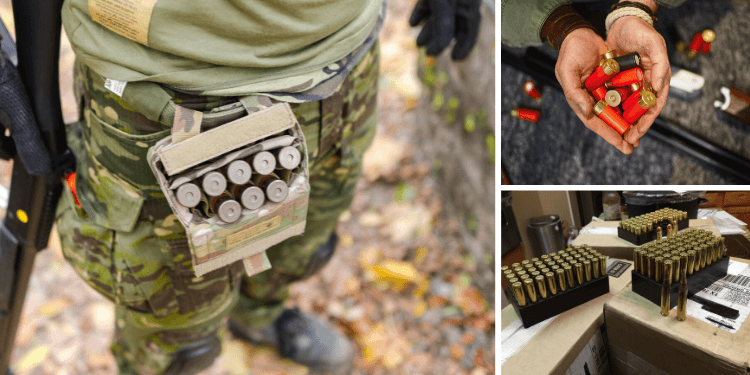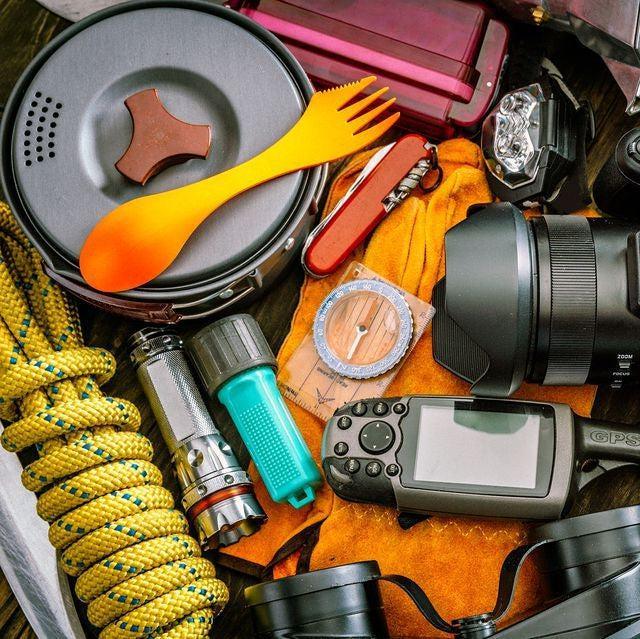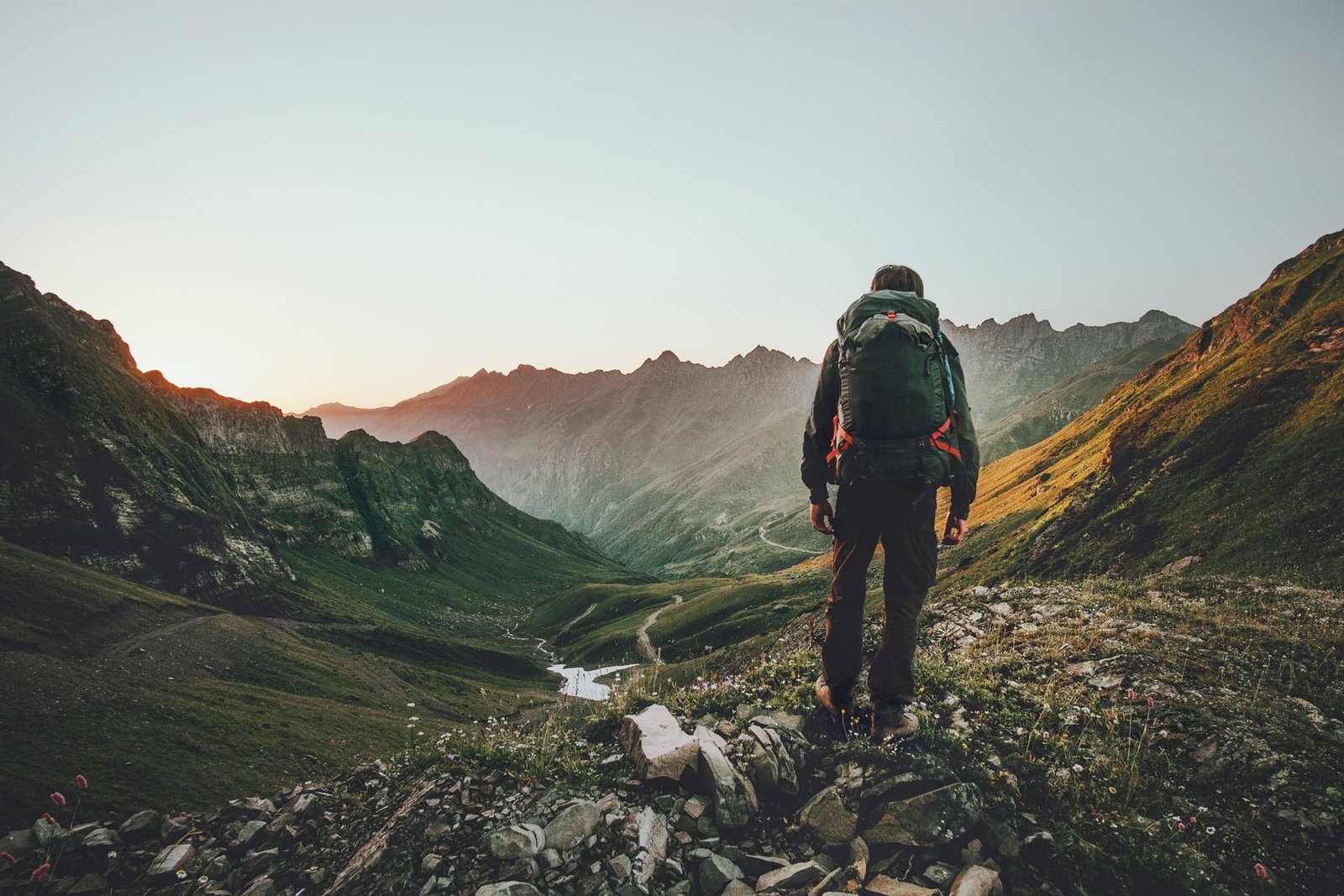
The Best Ammunition To Have Around When SHTF
Share
When a crisis hits you’ll stand a much better chance of surviving if you have a good gun. Whether it’s for hunting or self-defense, the right gun gives you a vital edge.
The problem is that, without ammunition, any gun becomes deadweight. If you want to be ready for whatever life throws at you a stockpile of ammunition needs to be part of your preparation.
The question is, what ammunition should you be stockpiling?
The Caliber Question

There have never been so many calibers to choose from.
A dazzling array of rounds offer everything from great terminal ballistics and phenomenal long-range precision to good performance even when firing subsonic rounds from a suppressed weapon. This is all irrelevant.
As a prepper, you shouldn’t be worrying about choosing the best possible caliber. What you need is a caliber that’s good enough, but more importantly is widely available.
That means it’ll be cheap enough to stockpile significant quantities before the SHTF, and relatively easy to find, barter, or scrounge afterward. It doesn’t matter how good a cartridge is if you can’t actually get your hands on it.
There are five calibers you should consider for survival use, because these rounds – and weapons chambered for them – are produced in huge quantities and available almost everywhere.
All except one of them are NATO-standard calibers, which means any US military unit and most police departments will hold stocks of them.
Is this the best ammunition in the world? No – but it’s the ammunition that will keep you alive. Say hello to the prepper’s best friends.
.22 LR

The only non-NATO caliber on the list, .22 is a seriously underestimated survival round.
It’s a small-caliber, low-velocity round, but it’s still powerful enough to take small game – and, in a pinch, if you start poking .22 holes in an attacker they’ll probably lose interest quite quickly.
The ammunition is also small, light, and relatively cheap, so you can stockpile and carry large quantities of it – and it should be available in any gun shop.
The .22 is a low-powered round to start with, so to get the most out of it you should look for one of the higher-velocity loadings.
The exception is if you plan to use a suppressor – a bolt-action .22 rifle with a suppressor and subsonic ammo is extremely quiet, and ideal for small game.
Hollow-point bullets will maximize the .22’s utility for hunting and defense. If you can only have one gun, a .22LR is actually one of the best options simply because the ammo is so small and cheap.
12-Gauge

This is the most popular shotgun caliber in the world, and it’s also the military and law enforcement standard, so it’s one of the easiest calibers to find.
It’s also a really versatile one; 12-gauge ammo ranges from light bird shot to Magnum slug loads capable of bringing down large game.
If you’re buying a shotgun aim for one that’s chambered for 3” Magnum shells.
You won’t always need Magnum rounds, but if your gun can take them you’ll be able to use any 12-gauge ammo you can get your hands on.
For the same reason get a gun with an adjustable choke, including cylinder bored.
When it comes to stockpiling shotgun ammo stick to shot rather than slug, because it’s more versatile. Buckshot will bring down a deer just fine.
Look at a mix of 00 buckshot for medium game, #1 shot for ducks and geese, and #7 shot for small game.
Federal law says you have to use non-toxic shot for hunting waterfowl, but otherwise lead shot is both cheaper and better.
9mm NATO

Also known as 9mm Luger or 9mm Parabellum, the 9x19mm NATO round is the standard military pistol caliber and it’s also the most common pistol choice in law enforcement.
There’s a prejudice against it in the US, but some of that might be down to anemic commercial loadings.
The military loading is about equivalent to a +P load and almost any 9mm handgun will handle that just fine – they’re mostly designed with an eye on military or police sales, after all.
In fact, the 9mm is a powerful, high-velocity handgun round with low felt recoil, good accuracy potential and compact enough dimensions that you can fit a lot of rounds in the magazine.
A JHP will add some expansion to its already formidable terminal ballistics, but fully jacketed military ball rounds hit hard enough in most scenarios and tend to give the most reliable feed.
This is going to be my most controversial recommendation, but if you want a handgun that will be easy to feed after the apocalypse, get a 9mm.
5.56mm NATO/.223

The standard military and police rifle caliber is 5.56x45mm NATO, an evolved version of the .223 Remington round. It’s a lightweight and flat-shooting round that hits hard out to around 300 yards from a carbine-length weapon, and there are billions of rounds of it stockpiled around the US in gun shops, police armories and military bases.
Whatever happens to the world this will probably be the last caliber to run out, so if you want a good all-round rifle get a 5.56mm one.
One thing to watch out for is that 5.56mm and .223 rounds are the same size and will chamber perfectly in each other’s weapons, but they’re not exactly the same thing.
5.56mm can be loaded to higher pressures and shouldn’t be fired from a weapon that’s marked as being chambered for .223 – it won’t be proofed to as high a pressure, and can’t safely handle NATO ammo.
On the other hand a 5.56mm weapon will fire .223 without any issues, so look for a rifle that’s stamped – and proofed – as 5.56mm.
The 5.56mm is an intermediate round – power-wise, it sits somewhere between a traditional rifle cartridge and a pistol one.
It’s capable of taking medium-sized game, but for hunting soft-nosed bullets will give it some extra punch. Stockpile those if you can, but in an emergency even military FMJ will be reasonably effective.
7.62mm NATO/.308

Any ballistics enthusiast will tell you that 7.62mm NATO isn’t a great round.
Designed to mimic the ballistics of military .30-06, for reasons that seemed good to the US Army but weren’t, it turned out to be far too powerful for the new generation of selective-fire rifles armies were adopting in the 1950s.
At the same time, it’s less powerful than the Magnum loads favored for modern hunting rifles.
Still, it’s a hard-hitting round that works well in a bolt action or semi-automatic, and there’s a lot of it around. Almost any military unit will hold stocks, as will most gun shops.
Like 5.56mm, 7.62mm has a civilian, equivalent, the .308 Winchester. Again, both rounds will chamber and fire in weapons proofed for the other – but in this case the civilian round is proofed to a higher pressure, so .308 might not be safe to use in a 7.62mm weapon.
Soft-point 7.62mm projectiles are best for hunting, but even with a FMJ load the big, heavy bullet will dump a lot more energy into the target than a 5.56mm.
There are a lot of great calibers out there, but how long will supplies last in a crisis? A .22 lever action with a round in the chamber is a much better rifle than a .300 Blackout AR15 with no ammunition, so the best survival ammunition cache is one that holds the same calibers everyone else is stockpiling too.


